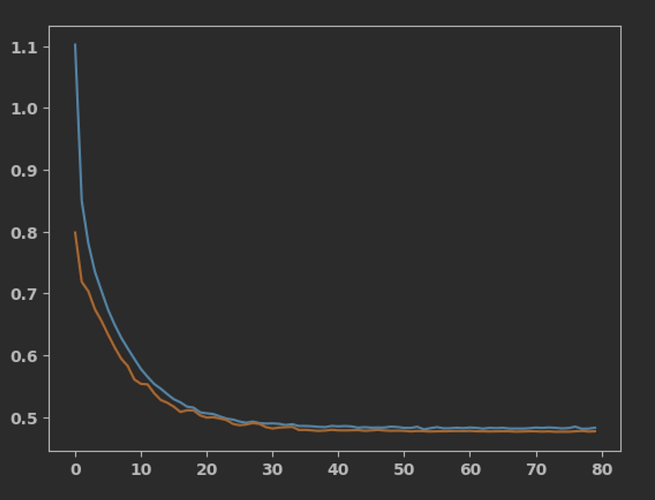Hey guys!
Like the title says, I would love some help on this quite general problem for me. Too often while building models (mostly Keras), I end up in a situation where I manage to get both training- and val loss down to about 0.5 (this time for a rather simple regression problem), but then it starts to oscillates and I am unsure of how to proceed.
I am using this Kaggle dataset: Housing Price Prediction Data | Kaggle
What I’ve tried to far:
Many different network architecture (started out simple and made it gradually deeper/wider), but of course, I might have missed a sweet spot.
Added Dropout, L2-reg and switched from Relu to Leaky Relu
Fiddled around with the learning rate quite a bit - now using both a ReduceLROnPlateau and a scheduler.
Tried different batch sizes (between 32 and 256).
Tried SGD instead of Adam, then switched back.
Tried changing the number of epochs (ranging from 50 to 200).
Code:
Early stopping
early_stopping_callback = EarlyStopping(monitor=‘val_loss’, patience=35, verbose=1, restore_best_weights=True)
Reduce learning rate on loss plateau
reduce_lr = ReduceLROnPlateau(monitor=‘val_loss’, factor=0.1, patience=15, min_lr=0.0001, verbose=1)
opt = Adam(learning_rate=0.0001)
Add the learning rate scheduler to the callbacks
scheduler_callback = LearningRateScheduler(lambda epoch: 0.001 * np.exp(-epoch / 10.))
Batch size
batch_size = 128
Regularization factor
l2_reg = 0.001
%% Set up model
model = Sequential([
Dense(16, kernel_regularizer=l2(l2_reg), input_shape=(X_train_scaled.shape[1],)),
BatchNormalization(),
LeakyReLU(alpha=0.01),
Dropout(0.1),
Dense(48, kernel_regularizer=l2(l2_reg)),
BatchNormalization(),
LeakyReLU(alpha=0.01),
Dropout(0.15),
Dense(80, kernel_regularizer=l2(l2_reg)),
BatchNormalization(),
LeakyReLU(alpha=0.01),
Dropout(0.2),
Dense(80, kernel_regularizer=l2(l2_reg)),
BatchNormalization(),
LeakyReLU(alpha=0.01),
Dropout(0.2),
Dense(80, kernel_regularizer=l2(l2_reg)),
BatchNormalization(),
LeakyReLU(alpha=0.01),
Dropout(0.15),
Dense(64, kernel_regularizer=l2(l2_reg)),
BatchNormalization(),
LeakyReLU(alpha=0.01),
Dropout(0.15),
Dense(1, activation='linear', kernel_regularizer=l2(l2_reg))
])
model.compile(optimizer=opt, loss=‘mean_squared_error’, metrics=[‘mean_absolute_error’])
%% Train model
history = model.fit(
X_train_scaled, y_train_scaled,
epochs=80,
batch_size=batch_size,
validation_data=(X_val_scaled, y_val_scaled),
shuffle=True,
callbacks=[checkpoint_callback, early_stopping_callback, scheduler_callback, reduce_lr]
)
Loss:
I would highly appreciate any tips or help to get around this problem. From what I understand it’s quite common. Many thanks in advance!
